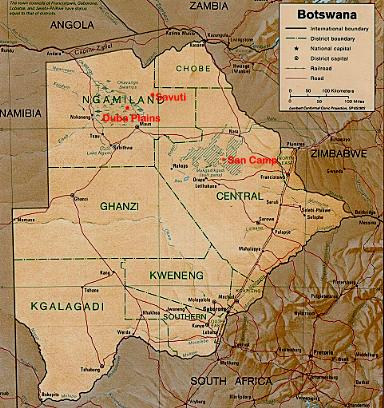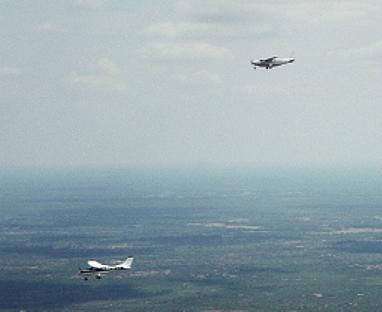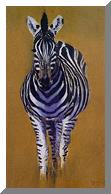This is the beginning of the second half of our trip to southern Africa in March and
April, 2003. It will all be in Botswana, our favorite place to see game. Another
reason we like Botswana is that it's still much more 'African' and not so first world. The
people are very friendly and the government is a very stable democracy. The vast majority
of the country is not populated and it has every sort of habitat.
Botswana is an African success story. A long-neglected British protectorate, the
country achieved its independence in 1966 and immediately thereafter, in a great stroke of luck,
discovered three of the world's richest diamond mines. Since the early 1980s, the country
has been the world's largest producer of gem diamonds. Three large diamond mines have opened
since independence. DeBeers prospectors discovered diamonds in northern Botswana in the
early 1970s. The first mine began production at Orapa in 1972, followed by the smaller mine
at Lethlakane. What has become the single-richest diamond mine in the world opened in
Jwaneng in 1982. Botswana produced a total of 21.3 million carats of diamonds from the three
Debswana mines in 1999.





Beyond the narrow eastern corridor where the majority of population is concentrated,
Botswana is a largely roadless wilderness of savannas, deserts, wetlands and salt pans. To ensure
the country's natural assets are preserved, Botswana's government has developed a policy of
specializing in primarily high-cost, low-impact tourism, but recently has some more reasonable
safari opportunities as well.
So much for a little background on Botswana. Here is a map with the three camps we
visited shown in red.

We flew from Phalaborwa to Joburg and spent the night and then left the next morning for
Maun (right below the red word Plains) where we transferred to a smaller plane to go to San Camp
by the Magadigadi Pan.
This shows the plane we came to Maun in and also the smaller one we left in for San Camp.



